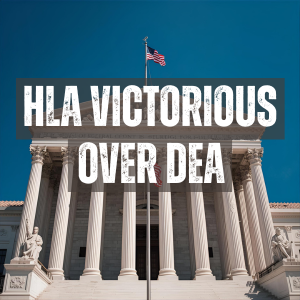.jpg)
When Drug Enforcement Administration investigators document diversion, inventory gaps, or paperwork lapses, the inspection report is only the opening salvo: revocation actions, six-figure fines, False Claims Act lawsuits, federal health-care program exclusion, state license loss, payer claw-backs, and even loan defaults can cascade within weeks, threatening a pharmacy’s very existence.
The chain reaction usually starts with an Order to Show Cause or, in urgent cases, an Immediate Suspension Order that halts all controlled-substance activity on the spot. Agents often urge owners to sign DEA Form 104 and “voluntarily” surrender the registration, a decision that industry counsel warn is almost impossible to undo. Even a lesser Letter of Admonition becomes public record and signals every other regulator that trouble is afoot.
Next come civil monetary penalties. Under the 2025 inflation adjustment, record-keeping errors cost up to $18 759 each and each invalid prescription up to $80 850, so a routine inventory gap can mushroom into mid-six-figure liability; Community Health Pharmacy in New Haven paid $192 000 on June 1 2025 for just such lapses.
Because the same unlawful prescriptions are typically billed to Medicare or Medicaid, DOJ lawyers now tack on False Claims Act counts: the April 21 2025 Walgreens settlement pairs CSA and FCA theories for up to $350 million and embeds a multi-year compliance monitorship.
An adverse DEA finding also unlocks HHS-OIG’s discretionary exclusion power; once excluded, a provider cannot bill any federal program, and DEA regulations treat that loss of “public interest” as an independent ground to revoke the pharmacy’s DEA registration.
Private payers and pharmacy benefit managers (PBM’s) move just as quickly. OptumRx’s 2025 provider manual authorizes immediate network suspension when a pharmacy’s license or DEA authority is “in jeopardy,” while contract fine print lets PBMs pursue recoupment for every claim tied to a questioned prescription. Losing those contracts can erase 70-plus percent of gross revenue overnight and spook wholesalers, banks, and insurers that monitor public DEA dockets for risk signals.
Finally, inspection files often feed criminal probes: lying to agents, back-dating records, or obstructing an audit can trigger felony charges even when diversion counts never materialize, as recent civil-penalty complaints in Houston demonstrate. Add the cost of outside consultants and the mandatory system upgrades that accompany settlement monitorships, and the true price of a failed DEA inspection can dwarf the original fine.
Frequently Asked Questions
Q: Can I continue dispensing while I fight an Order to Show Cause?
A: Yes, but not if the DEA also issues an Immediate Suspension Order; an ISO shuts down controlled-substance activity until the case is resolved.
Q: Should I ever sign DEA Form 104?
A: Only after counsel reviews the inspection findings; voluntary surrender is faster than revocation but far harder to reverse.
Q: How do civil fines get so high so fast?
A: Each missing line-item, Form 222 error, or invalid prescription is a separate violation—currently $18 759 or $80 850 apiece—so ten mistakes can exceed $500 000.
Q: What other agencies will find out about a bad inspection?
A: HHS-OIG (exclusion), state boards (license action), the NPDB (permanent record), PBMs (network status), and sometimes the U.S. Attorney’s Office (FCA claims).
Q: How can I limit the damage?
A: Engage experienced counsel before agents leave the premises, conduct an immediate inventory reconciliation, and prepare comprehensive corrective-action documentation for every stakeholder—DEA, state board, PBMs, and payers alike.
MORE ARTICLES BY CATEGORY
What to Expect in a Wound Care Audit - And Why You Shouldn’t Go It Alone
In 2025, wound care audits have become a top enforcement priority for federal and private payors, leaving providers unprepared and facing thousands in recoupments. Understanding how wound care audits progress is crucial to defending your practice from unjust penalties, and engaging counsel early is essential to protecting your practice. Learn how Health Law Alliance can help prepare a strategy-driven defense designed to minimize risk and preserve your practice’s reputation.
Read More >>DOJ Targets Florida Dermatology Practices’ Wound Care Coding
Earlier this year, the DOJ announced a settlement with Florida dermatology practices over allegations of false wound care claims submitted to Medicare. Learn more about the settlement and how Health Law Alliance can protect your wound care practice before regulators come knocking.
Read More >>When a Wound Care Audit Hits, Call Counsel First: How Specialized Attorneys Protect Your Practice
Medicare is intensifying scrutiny of wound care, OIG’s work plan spotlights skin-substitutes and related services, while CMS’s CERT program still finds sizable fee-for-service improper payments - so a targeted audit can escalate quickly to payment suspensions and referrals if mishandled.
Read More >>When Inventory Discrepancies Become Audit Nightmares: Understanding One of the Most Common and Costly Audit Findings
Inventory reconciliation is one of the most scrutinized areas in PBM and payer audits and even small discrepancies can trigger major financial, reputational, and regulatory fallout.
Read More >>





